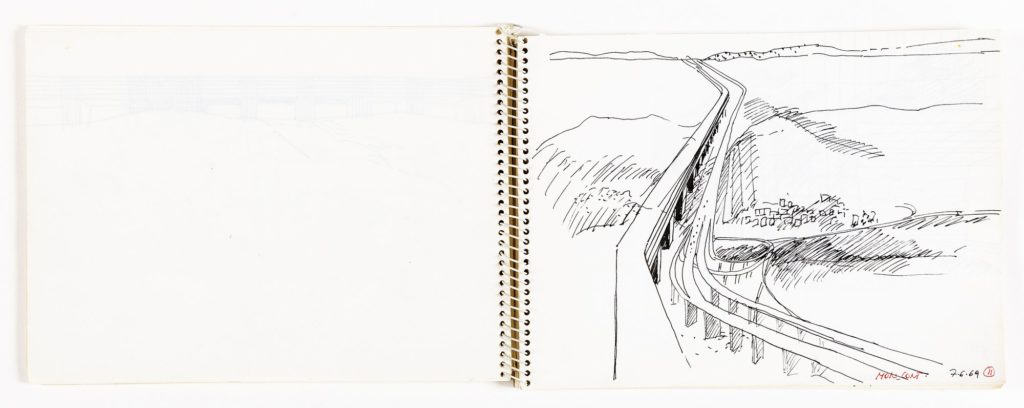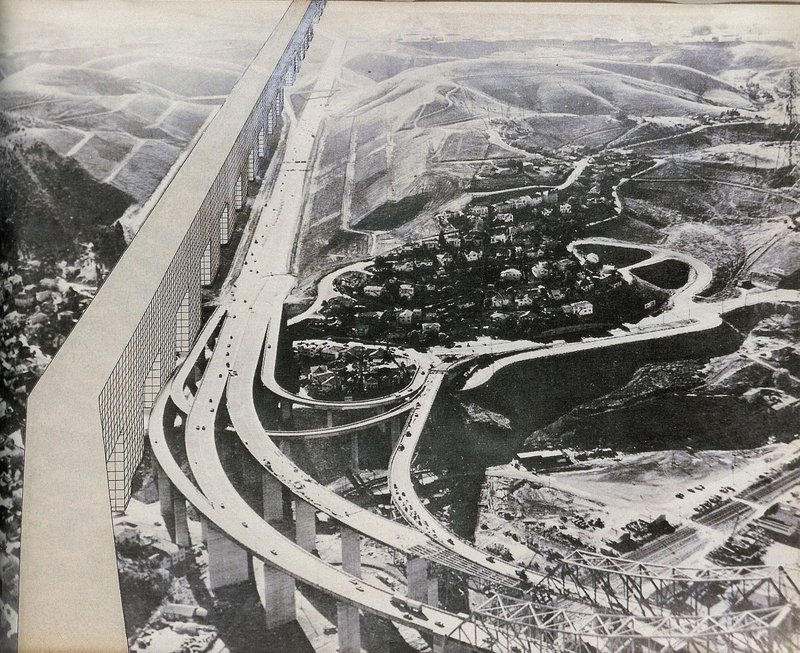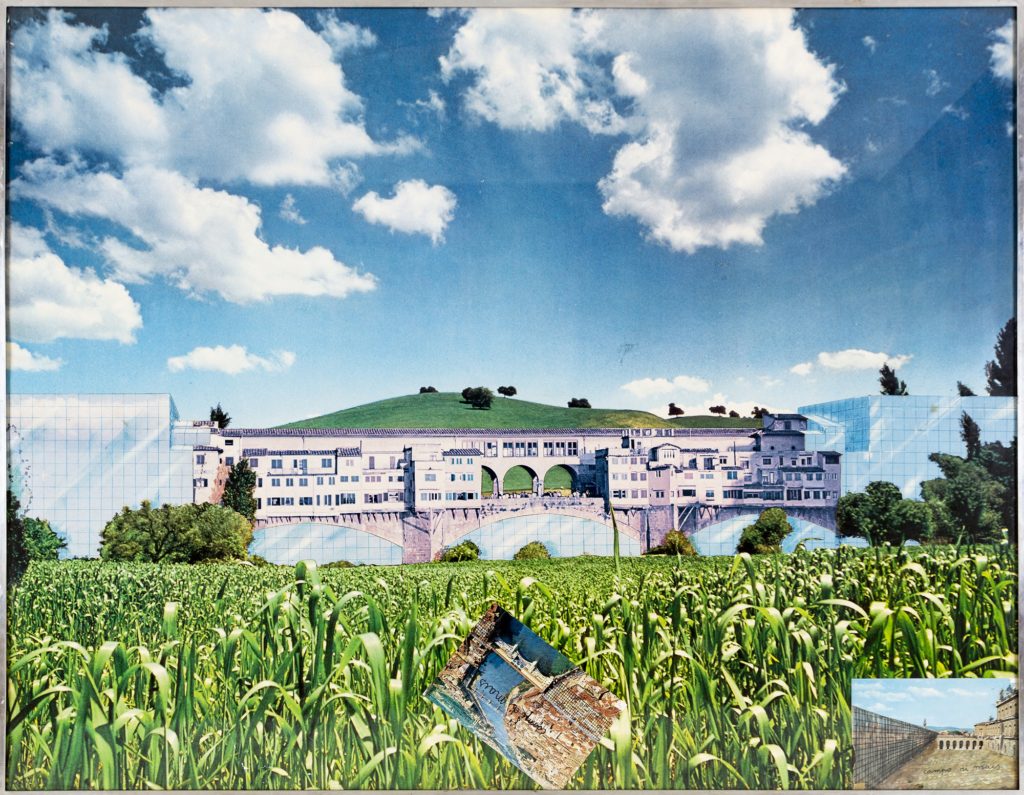Superstudio: Monument Interrupted

The collages of Superstudio’s ‘Continuous Monument’ have always seemed to me like stills from an unseen film, each image framing a part of a wider scenography. Combining the collages does not make the larger reality of the monument any less elusive or fragmentary, akin to the way that remembered dreams replay themselves unannounced and incompletely in sparks or bursts. This effect is not so surprising as the monument itself is paradoxical and disorientating. It brings ambiguity into the understanding of what is background and what is foreground in the context of the city, recasting the conventional figurative role of architecture as landscape.
Each of the finished collages of the monument are not just visions of a future, but powerful images of present and future combined; each situation holds a polemical view on our political and social landscape. Their power continues to affect and provoke today, continuing to seize the imagination and provide a convincing alter-ego for what and who architecture is for.
I had not seen the sketchbook pages made by Adolfo Natalini in 1969 that are included in the Drawing Matter archive before, and I had to look a few times before realising that they showed the same ‘Continuous Monument’ that had been wired into my head as images of endless architectural space. These beguiling sketches did not have the same feeling of ‘everywhereness’ that the finished collages suggest. Although the linear ‘continuous’ structures encompassed in the views still move through and beyond the frame of the sketch, their shape and their placement in these two drawings is carefully drawn into a relationship with their Florentine setting. The existing city is not portrayed as an idea, but as a specific reality, offering presence through topography, material, history, and cultural weight.


The new structure deftly mirrors the contours of the hills and it holds urban spatial significance alongside the river, autostrada, mountains and city centre. It shapes and is shaped, creating a feeling of evenness. Instead of the monument ‘filling the void’, here it creates a good edge: permeable, structuring, and spatially legible against the fields of city and mountains. Nature and the city are able to be openly experienced, without hierarchy.
This ‘monument’ appears to be servicing the city – it is equally possible to imagine the structure as a train tunnel or an aqueduct – in a way that seems ambiguously ancient and modern. Fascinatingly, the grid has disappeared from the ‘monument’, and instead is found in the detailed urban mesh describing the historic city centre streets, and the loose urban structure of the nearby housing and roads. It is as if the role of the grid that sought human significance in the ‘Continuous Monument’ had delegated some of its intentionality into the close fabric of the historic Florentine settlement, waiting for the agency of the new Superstudio structure to animate it and invigorate its social purpose.
Perhaps the grid of the ‘Continuous Monument’ is more real than I thought; a call to discovery of what sustains existence; as Marius Grootveld nicely noticed in the AF100 Days Alternative Histories lecture event, it is already all around us.

For Superstudio, it may be that the Florence they knew proved too complex, and familiar, a subject to be easily colonized by the Continuous Monument itself. In 1971 the Monument returns to the Arno Valley from its travels around the World. It finds that it has done the job; the City has gone. Nothing to do now but attach itself to the ends of the Ponte Vecchio, and to become the infinite extension of the Vasari Corridor.

– Adolfo Natalini